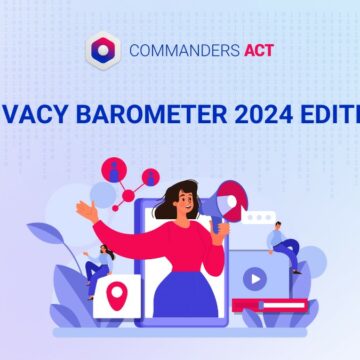What solutions are there to replace third-party cookies?
21/09/2023 |

While the end of third-party cookies is approaching, no solution seems yet to have really taken hold to replace them. Between the Privacy Sandbox, contextual targeting and new IDs, the market is spoilt for choice. Here’s a look at the candidates.
What will the successor to third-party cookies look like? This is a question that has been asked for several years now, and the drama has been escalating with each announcement that third-party cookies are to be abandoned. There are two reasons for this. Firstly, because third-party cookies are the compass of digital marketing – or at least they used to be. It is the cookie that makes it possible to associate IDs with Internet users throughout their browsing. It’s how visitors can be tracked and retargeted from site to site. It’s also how the performance of a campaign can be measured.
Another reason why time is running out is that Internet users are adopting new habits. In Europe, 53% of them change their cookie preferences to prevent cookies being collected on certain websites. In Europe, 27% systematically refuse to accept cookies.
Faced with this erosion and its consequences for the information gathered, how can we nurture the main use cases (targeting, retargeting, attribution, capping, etc.)? Many of the candidates have come up with some answers. According to a study carried out by Minted among publishers, while they were using an average of 9 types of ID solution in January 2021, the average in January 2022 was already… 19 solutions. An increase in line with the prevailing frenzy.
And as each of these solutions calls for different implementations and has an impact on the quality of the data collected, the CDP (Customer Data Platform) must be able to adapt. That’s why Commanders Act is following this issue step by step. We take a look at the main forces at work.
Google Privacy Sandbox: too complex?
Let’s start with the player in a singular category, since it is both judge and judged: Google and its Privacy Sandbox solution. This is an “aggregated data” type solution. To put it plainly, Internet users are associated with cohorts that must be both fine enough to represent relevant audience segments and large enough not to allow individuals to be identified through cross-referencing, in order to comply with the RGPD.
While the Privacy Sandbox comes with a number of APIs to cover different uses, the effort required to implement it raises questions about its take-up by the market. And that’s not the only problem… It will not be possible to optimise purchasing in real time, while the quality of the information fed back to ensure measurement remains to be specified. Finally, this solution extends Google’s omnipresence, which doesn’t really fit with the direction of history – particularly on this side of the Atlantic.
Contextual solutions: back to basics
The idea here is to return to a media planning approach – as opposed to an audience planning approach – based on the semantics of the content visited. There are a number of advantages to this: the solution does not require an identifier, the reach is wide and the technologies of the day result in relevant affinity targeting. In short, the ideal candidate for prospecting and acquisition. But… only for these uses.
In fact, the solution does not offer any retargeting mechanisms, and therefore prohibits loyalty scenarios. To cover the latter, contextual solutions have no choice but to look for complements from Privacy Sandbox or ID solutions.
ID solutions to the matching challenge
ID 2.0 from The Trade Desk, ID5, RampID from Liveramp… There’s no shortage of candidates in this category. And that’s the problem. These solutions, which use an email or telephone number to generate an anonymised identifier for an Internet user, can be used to cover any scenario… If – and only if – consent has been obtained for the various purposes. It remains to be seen whether this will have the desired effect.
Especially as the fragmentation of these tools creates a matching challenge. Hence the “Unified 2.0” initiative proposed by The Trade Desk to synchronize the different IDs and achieve a relevant reach.
UTIQ: the European advantage
The question of the reach of ID-type solutions could be solved by some unexpected candidates: mobile operators. Vodafone, Deutsche Telekom, Orange and Telefónica have launched UTIQ, an advertising identifier linked to the SIM card. This is a promising project for a number of reasons: it is supervised by the European Commission, which means it will comply with regulations by design; on paper, it offers a wide reach on a European scale; and lastly, it offers deterministic targeting.
However, here too there are obstacles ahead. With UTIQ, Internet users would have to give their consent both for its implementation and on each site. A double opt-in that could significantly reduce the actual reach… In addition, Apple’s ‘Private Relay’, which masks the IPs of iCloud users, could also restrict the effectiveness of UTIQ. The fact remains that this solution, endorsed by Europe and supported by such players, represents a credible option in the current landscape.
In the face of uncertainty, the obvious thing to do is to take care of first-party data collection
Enough to win? Probably not. The post-cookies era promises to be one of cohabitation between several solutions, at the cost of a complexity that all the players in the digital advertising chain will have to learn to manage.
There is one piece of good news, however: while the future is uncertain for third-party cookies and the resulting third-party data, it is much clearer for IDs and first-party data. Derived from a direct relationship with brands and collected in complete transparency, first-party data has great potential that still needs to be transformed. All the more reason to look after first-party data collection and exploit it within a CDP designed for the age of cookieless.











